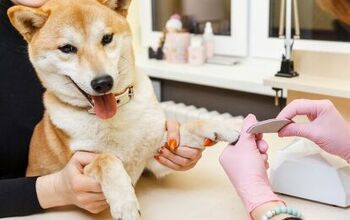Cats are often known for their laidback and aloof personalities, lounging around the house like true couch potatoes. But just like us, our kitties need regular exercise to live a happy, healthy, and fulfilling life. That’s where your job as a cat parent comes in! In this article, we will explore the importance of exercise for your cat, including how much exercise they need, the benefits of being active, and fun ways to include more physical activity in your cat’s daily routine. Whether you have an energetic young kitten or a calm senior cat, understanding their exercise needs can make a significant difference in their overall well-being. How Much Playtime Does an Indoor Cat Need? When choosing the perfect pet for your family, you have likely heard about how laid back and easy to care for cats can be. After all, they just lounge around the house all day. Right? The truth is that your cat needs daily activity to stay healthy and in shape. The exact amount of exercise your cat needs will depend on several factors, including their age, breed, lifestyle, and individual health needs. For example, a cat that is obese and needs to lose weight to improve their health may need more physical activity than a cat that is already of a healthy weight. That being said, the general rule of thumb is that a healthy adult cat should be engaging in 30 to 60 minutes of active playtime every day, split into shorter 10 or 15-minute play sessions. If you are unsure about your cat’s specific needs, contact your veterinarian. They will be able to provide insight into how exercise and playtime can improve or help to maintain your cat’s quality of life at this stage and as they continue to age. How Do I Know My Cat is Getting Enough Exercise? There are several behavioral signs that a cat isn’t getting enough exercise that you can watch out for. Cats that don’t engage in regular physical activity often suffer from boredom, depression, or anxiety. While our cats obviously can’t speak to tell us this, we can pay attention to their body language and behavior to catch any signs of trouble. Some key signs to watch out for include: Destructive Behavior: One of the first signs people notice when a cat is bored is that they start to exhibit bad habits and destructive behavior. This could include scratching your furniture, tearing apart the toilet paper, ripping curtains or screens, or stealing items they know they shouldn’t. It’s like a young child. They are bored and looking for ways to keep themselves entertained. Excessive Vocalization: Do you have a naturally vocal cat? If so, they may be trying to tell you that something’s wrong verbally. Some cats, when bored, will cry out for attention. This is a behavior we see in our two every time their morning playtime is even 5 minutes late. Change of Appetite: If they are feeling anxious or highly stressed, some cats will stop eating. Others, like humans, will turn to food during times of boredom. Any unexplained changes to your cat’s diet should be considered a sign of trouble – whether it’s a need for more exercise or something health-related.Over-Grooming: Cats are masters of self-grooming, but if a cat is stressed, anxious, or bored, they may take their grooming too far. This can often lead to the development of bald patches or skin irritation. Aggression or Irritation: Some cats become irritable or upset when experiencing stress and anxiety. This could result in uncharacteristic biting or scratching directed towards you, other family members, or other pets in the home. Loss of Energy or Lethargy: This may come as a surprise as most people will associate not enough exercise with having pent-up energy just begging to come out. However, a cat that isn’t getting enough physical activity can become depressed, which may present as being lazy, uninterested, or more aloof than usual. Another important sign to watch out for is unexplained weight gain. Just as humans will gain weight if they aren’t getting enough exercise, so will your cat. Sure, they likely aren’t concerned with “how they look” each morning – but obesity is a growing problem in the United States and can introduce serious health consequences!












